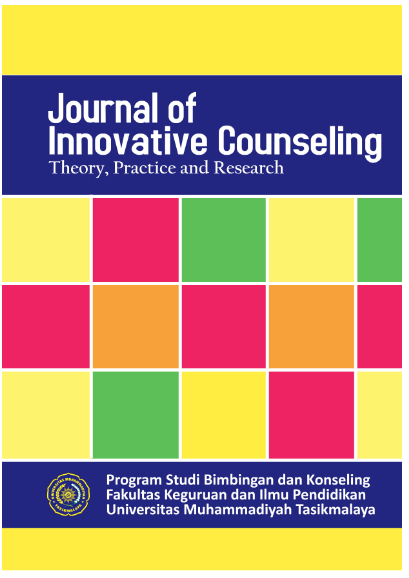HUBUNGAN SELF ESTEEM TERHADAP KECENDERUNGAN BODY DYSMORPHIC DISORDER PADA REMAJA
Keywords:
body dysmorphic disorder, self esteem, studentsAbstract
The purpose of this study is to determine whether there is a relationship between self esteem and the tendency of body dysmorphic disorder in adolescents. Self esteem is an individual's judgment in assessing himself as a whole which results in acceptance or rejection of himself based on feelings of worth, feelings of acceptance, and wisdom. Body dysmorphic disorder is a disorder regarding obsession with body image that involves excessive preoccupation, feelings of dissatisfaction, and excessive worry about their physical appearance. The respondents of this study were 224 XII grade students at SMAN 1 Ciawi. The instruments used are self esteem scale which refers to Coopersmith's theory, and body dysmorphic disorder scale which uses Rosen's theory. The analysis used is Pearson Correlation analysis. The results of this study indicate that in general the self esteem of class XII students is at a moderate level category with a percentage of 68.8% (154 students). Likewise, with body dysmorphic disorder, the majority of students are at a moderate category level with a percentage of 62% (138 students). This shows that the results of the study statistically show that there is no significant relationship between self esteem and the tendency of body dysmorphic disorder, but the coefficient value shows that there is a negative relationship between self esteem and the tendency of body dysmorphic disorder.
Downloads
References
Arikunto, Suharsimi. 2006. Prosedur Penelitian: Suatu Pendekatan Praktik. Jakarta: Rineka Cipta. Coopersmith,Stanley. (1967). The Antecedent of Self Esteem. San Francisco: Freeman and Company.
Dicky Wira Raharja. (2018). Self Esteem dan kecenderungan Body Dysmorphic Disorderpada Mahasiswi. Skripsi
Universitas Muhammadiyah Malang.
GRACIA, GABRIELLA (2015) Hubungan antara Body Image terhadap Kecenderungan Body Dysmorphic Disorder
pada Mahasiswa PKK Psikologi Mercubuana Jakarta yang melakukan Selfie di Media Sosial (Instagram atau
Facebook). S1 thesis, Universitas Mercu Buana.
Nourmalita, M. (2016). pengaruh citra tubuh terhadap gejala body dysmorphic disorder yang dimediasi harga diri pada remaja putri. Psychologi Forum UMM, 546–555.
Philips k. (2009). Understanding Body Dysmorphic disorder. Oxford Univercity Press.
Rahmania, P. N., & Yuniar, I. C. (2012). “Hubungan Antara Self-Esteem Dengan Kecenderungan Body Dysmorphic
Disorder Pada Remaja Putri.” Jurnal Psikologi Klinis Dan Kesehatan Mental Vol. 1 No. 02, 1(02).
Rosen, J. C. (1995). The nature of body dysmorphic disorder and treatment with cognitive behavior therapy. Cognitive
and Behavioral Practice, 2, 143-166.
Rosen, J. C., Jones, A., Ramirez, E. & Waxman, S. (1996). Body Shape Questionnaire: studies of validity and
reliability. International Journal of Eating Disorders, 20, in press.
Saipuddin, A. (2014). Metode penelitian.
Santrock, J. W. (2012). Perkembangan masa hidup (jilid 2). Erlangga.
Wilhelm,S., Phillips,K.A., Didie,E., Buhlmann,U., Greenberg, J.L., Fama,J.M., Steketee
Cognitive-behavioral Therapy for Body Dysmorphic Disorder: A Randomized Controlled Trial. Behavior Threapy, 45(3), 314-327. Volume 45, Issue 3, May 2014, Pages 314-327




